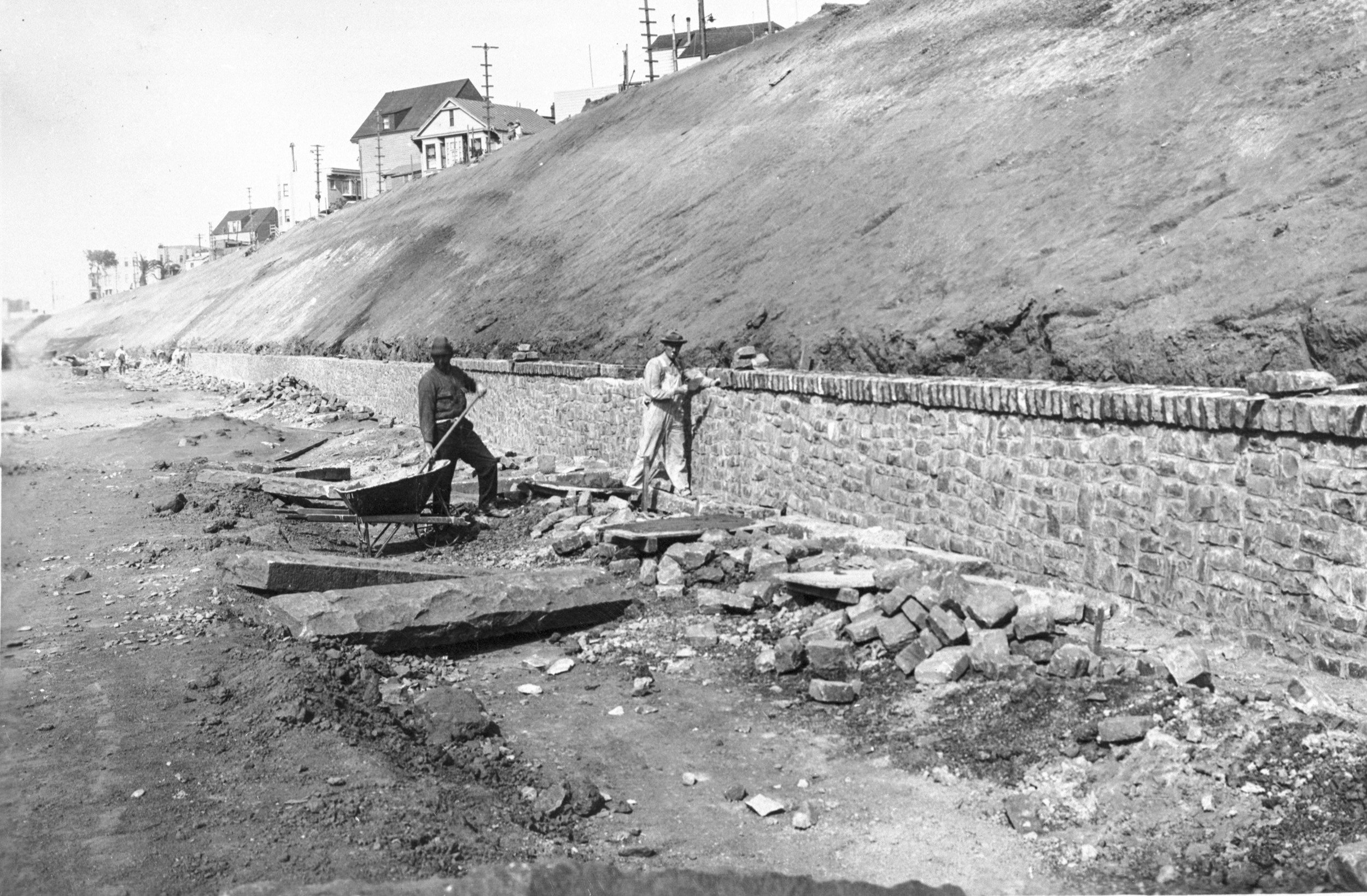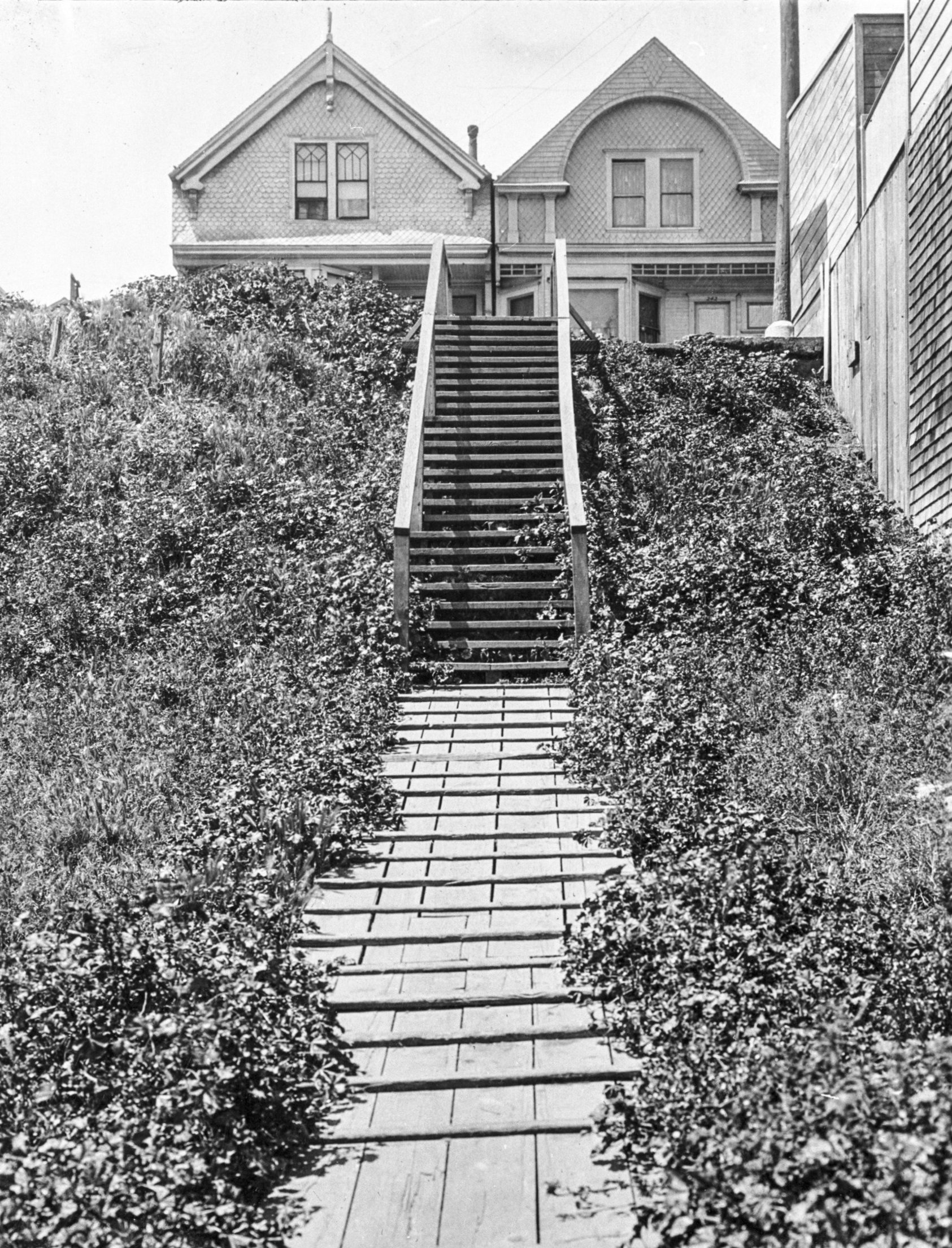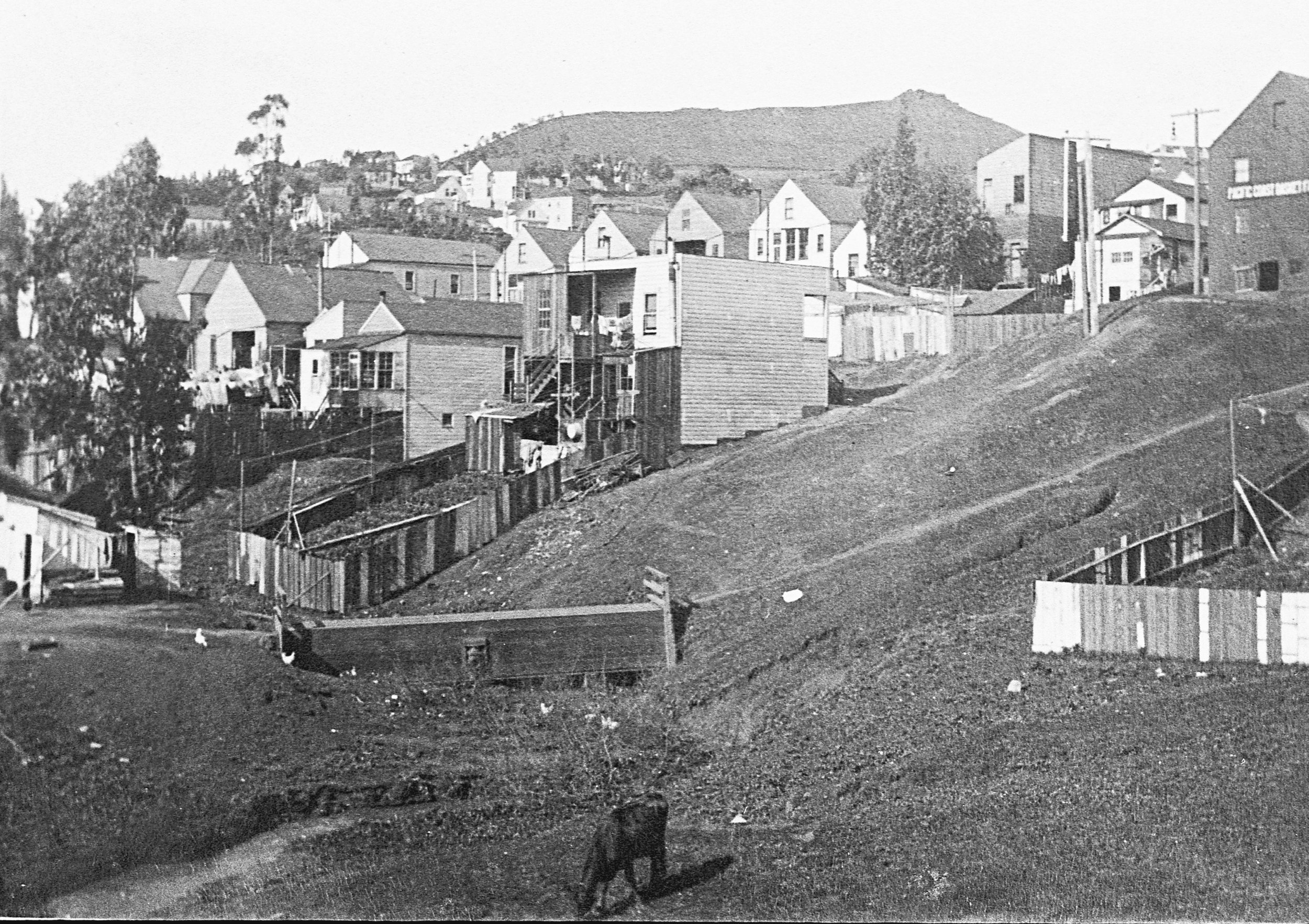UNSEEN PASSAGES
Clues in the landscape. Clues in the built environment. Clues to the unseen passages of water, of pedestrians, of horse-drawn buggies, of fault activity, of time.
Plants like the Arroyo Willow (Salix lasiolepis), when appearing in the landscape, can point to sites of underground water, often waterways we can’t detect, but which the land depends on. Silver leaf lupine is a native plant that thrives here, whose presence points to a unique rock soil combination inhospitable to many plants.
Along the Bernal Cut, you encounter Miguel Street, the name a nod to Rancho San Miguel, the 1846 Mexican land grant of José de Jesús Noé which covered one-sixth of San Francisco’s current land mass (one Spanish league or 4444 1/3 acres), and whose eastern border was almost entirely along San Jose Avenue. Noé’s wife was Donna Catarina Valencia.
St. Mary’s Avenue is just downhill from College Avenue, where Archbishop Joseph Alemany laid a cornerstone for St. Mary’s College in 1862, as part of 60 acres of Rancho Rincon de las Salinas y Potrero Viejo purchased by the archdiocese from Jesús Bernal. Today St. Mary’s Park residential neighborhood (look for the bell shape on the map) and St. Mary’s Recreation Area, including Alemany Farm, sit on part of this land. The college moved to Oakland in 1889.
The backbone of the geological ridge cut through to make the Bernal Cut is Radiolarian Ribbon Chert with some decomposed [Pillow] Basalt. Both are rock types in the Franciscan Mélange/Complex. Also excavated were clays. In other rock news, at the foot of the slopes created when the Bernal Cut was widened, 4 foot tall rubble walls of basalt blocks were installed, the basalt having been used as street paving in other parts of the city.
Starting in the 1860s, the rolling hills once were used as grazing ground for cows and horses, where along Old San Jose Road for example, pasturage was offered at the Twelve Mile Farm by John Cumming.



